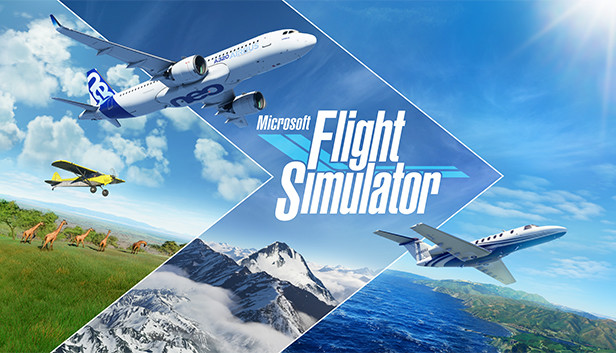Welcome to the guide to Microsoft Flight Simulator 2020. The latest installment in a series of simulators from Microsoft allows you to explore the globe and pilot different types of aircraft.
Thanks to the ability to turn on the facilitations, the game is suitable not only for avid aviation simulator lovers, but also for those who simply want to focus on a pleasant journey.
An additional attraction is the fact that players can influence the weather, freely manipulating the time of day or weather conditions. The camera settings also allow you to take stunning pictures.
Hardware requirements on PC
The simulator offers a faithful reproduction of the Earth, as well as many realistic cities. It has been announced that a total of 37 thousand realistically mapped airports will be brought into play. The creators also focus on advanced systems and weather effects.
Minimum requirements of Microsoft Flight Simulator:
- CPU: Ryzen 3 1200 / Intel i5-4460
- Graphics card: Radeon RX 570 / NVIDIA GTX 770
- VRAM: 2GB
- RAM: 8GB
- Disk space: 150GB
Recommended Microsoft Flight Simulator requirements:
- Ryzen 5 1500X / Intel i5-8400
- Graphics card: Radeon RX 590 / Nvidia GTX 970
- VRAM: 4GB
- RAM: 16GB
- Disk space: 150GB
Ideal configuration for Microsoft Flight Simulator:
- CPU: Ryzen 7 Pro 2700X / Intel i7-9800X
- Graphic card: Radeon VII / Nvidia RTX 2080
- VRAM: 8GB
- RAM: 32GB
- Disk space: 150GB
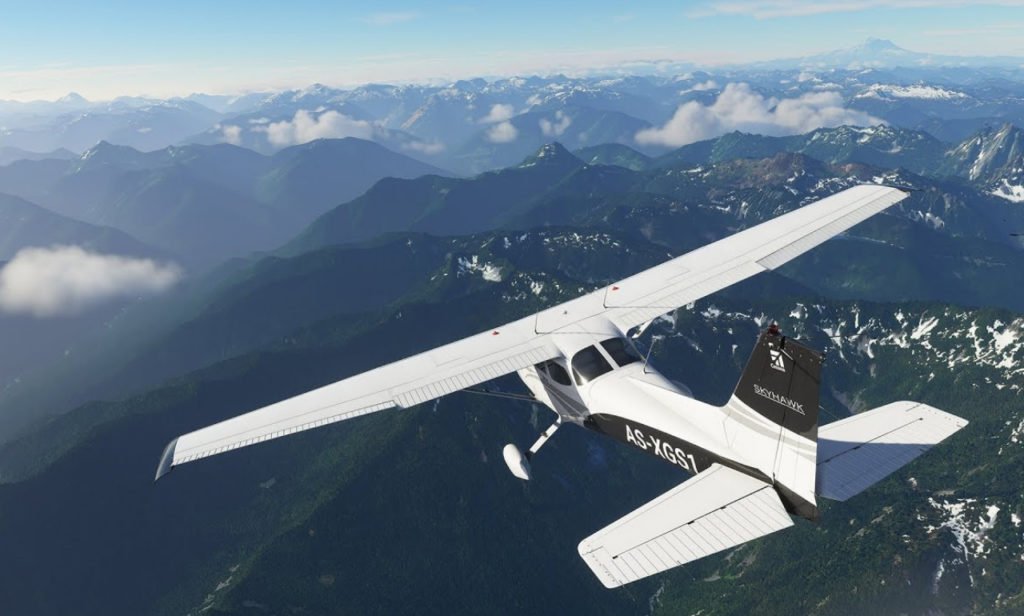
FPS, Graphic settings
Contrary to appearances, the number of frames per second is affected not only by the graphic settings, but also those related to data transfer or air traffic, among others
At the very beginning, make sure that there are no programs in the background that may cause a drop in liquidity. Some users even recommend turning off Nvidia Experience.
Download the latest graphics card drivers and the latest version of the operating system.
Once you’ve done this, we can go to the graphic settings. Go to the Options tab, and then go to General. The first section on the left is Graphics.
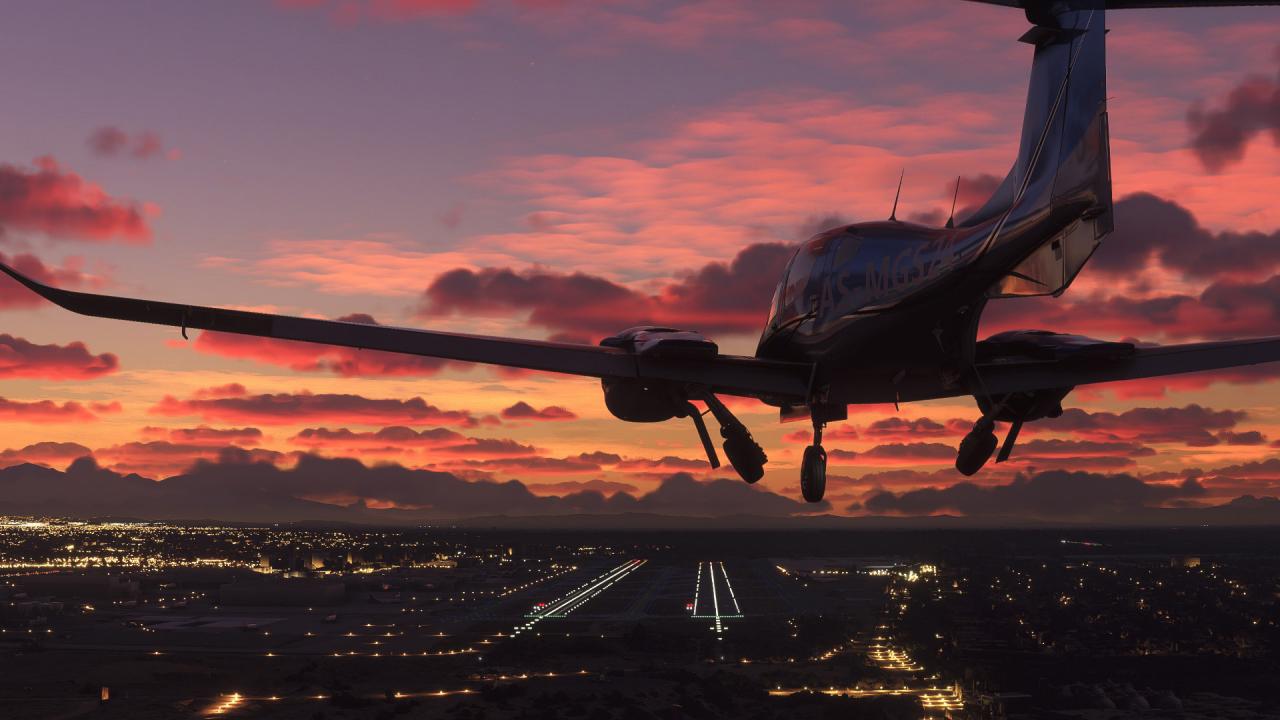
Below are the options that have the greatest impact on the game
- Display mode – it is necessary to set to full screen
- Full-screen resolution – reduction will greatly reduce image quality, but guarantee more FPS. Reduce as a last resort
- V-Sync – shutdown can help
- Level of terrain detail and level of detail of objects – great fluidity improvement, you can even reduce the sliders to a minimum, which with high flights should not significantly worsen the graphics
- Vector data of terrain, buildings, trees, grass and shrubs – if you experience FPS dips in low flights, reduce these values to medium or low
- Volumetric clouds – strong influence on load, set to low
- Waves on water – reduce if you experience FPS drops on water
- Shadow mapping – 768 will provide the right balance
- Terrain Shadows and Contact Shadows – it is best to disable these options
- Ambient Occlusion – a very big influence on FPS, but also on the quality of graphics on the ground. Turn off for best effect
- Reflections – switching to low will give you a few more frames per second at certain moments
The operation of the Microsoft Flight Simulator is influenced not only by the graphic settings, but also by data downloaded from the network and air and water traffic options.
- Let’s first go to the Traffic section.
If you have problems with the game, turn off the air traffic and then lower all sliders on this screen to a minimum.
- Now go to the Data section
Disabling the Online feature will cause some users to noticeably improve the performance of the game, but it is not worth doing so if you only get a few more FPS – the game will look much worse, especially on low flight.
Easy level for beginners
- In the main menu, go to the Options tab and then go to Support.
- If you want to quickly turn on the easy mode, simply select Full support at the top using the arrows on the sides. This will set all parameters to Easy level.
- However, you can customize the assist options to suit your needs, e.g. change some to Medium level or even more difficult. To do this, click on a specific section, which will list the associated assists.
- Here you can freely turn them on and off, as well as change the general level of difficulty of a given section – thus influencing all the associated assists. All these actions will change the type of support to Custom.
- When you exit this menu, the game will ask if you want to save the new settings. Of course you have to do this to save the configuration.
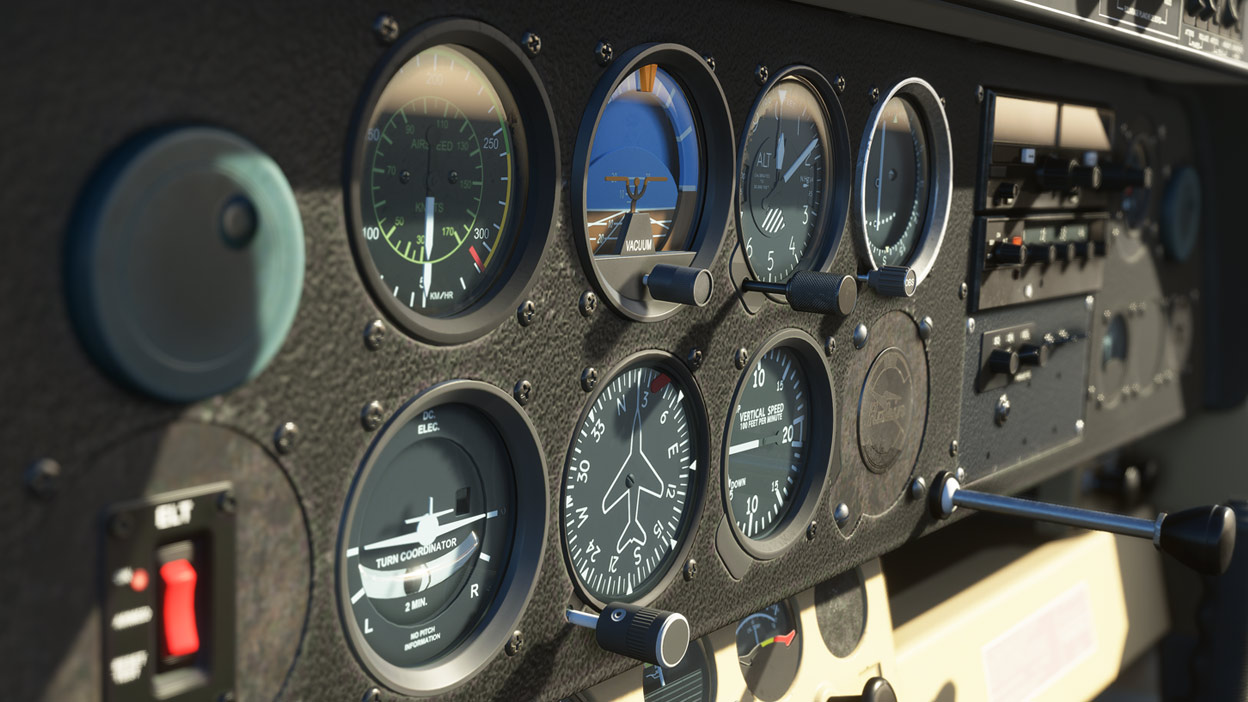
- To check or change the control, go to the Options tab in the main menu and then select Control .
- On this screen, you can switch between tabs showing the keyboard, mouse or, if you are connected, another device such as a pad.
Important note: in the Microsoft Flight Simulator menu we advise you to navigate with the mouse even if you have a controller connected. This way you will avoid problems.
- To check the control, just have a look at the specific tab.
- To customize the control, first select the tab with the specific device – for example, the keyboard.
- At the bottom, find the action for which you want to change your control. In our case, it will be “Switch ejection”.
- Now click on the left if you want to change an existing assignment, or on the right if you want to add a new key or combination.
- In the first case, click on “Clear current input” first and then on the blank field at the top – so that it is highlighted in white.
- Now press the desired button or combination of buttons and click “Verify”.
- If this is your first change, the game will ask you to create a new control profile. Do this, or the new configuration will not be saved:You switch between the control profiles for each device using the small arrows under a specific section.
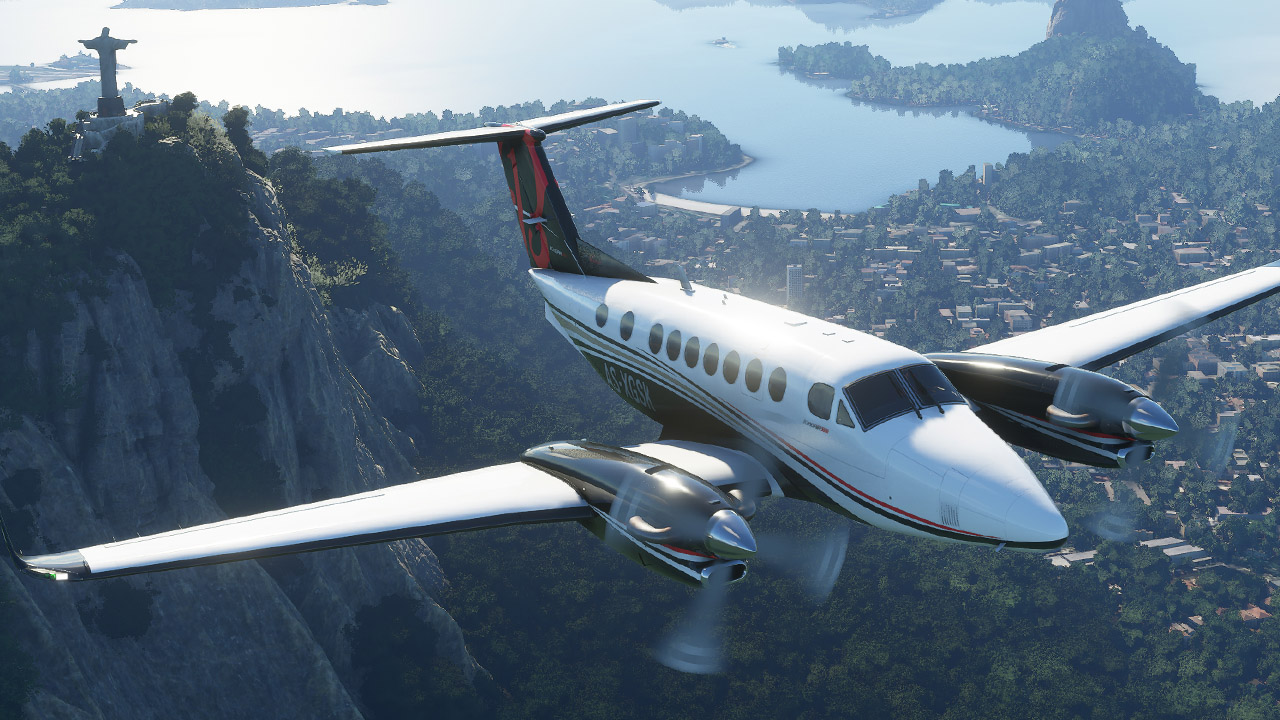
Keyboard and mouse + pad
Production is supported by official Microsoft controllers, i.e. pads from Xbox consoles. Just connect the device wired or wirelessly.
In such a configuration, the pad will be responsible for the basic activities associated with the aircraft, while for all the detailed actions, which are performed less often, the keyboard.
Unfortunately, it is not possible to completely resign from the keyboard, even if you use a controller. The vast majority of available actions still have to be performed with the buttons on the keyboard, but using the pad significantly increases the comfort and ease of control.
Here are the steps you can take with the pad:
- steering the plane, climbing and descending, turning
- throttle control, or speed
- free rotation of the camera
- change of camera from outside to inside view of the cockpit
- change of view inside the cockpit
- brake control
- flap control
- Height trimmer control (among other things to steer the bow down or upwards)
- Extension / retraction of the chassis
With the pad you can perform all the actions necessary for the flight. Using the controller also allows you to easily control the plane with your left hand, while the other operates the mouse in the pop-up menu.
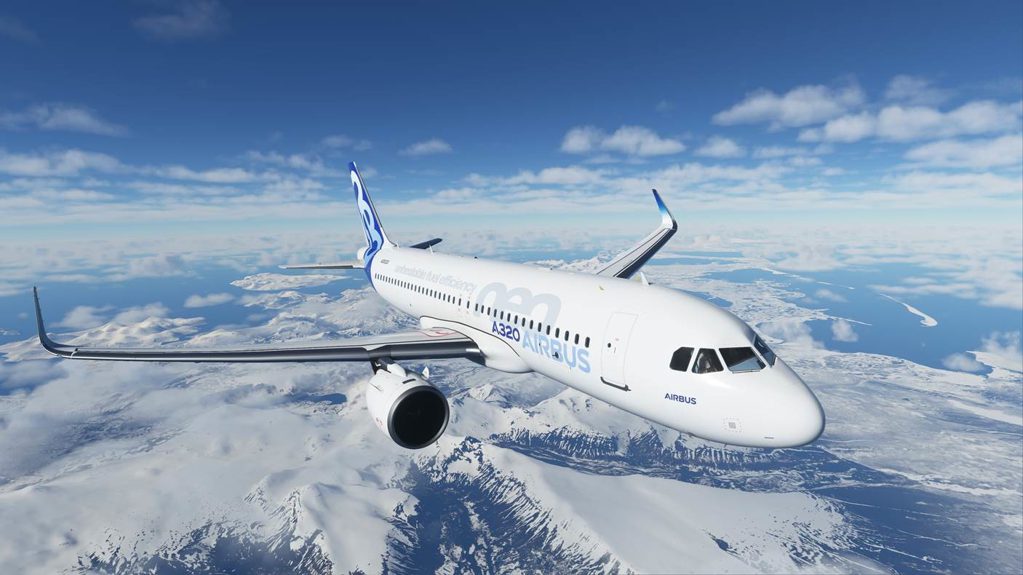
Active pause and photo mode
To activate the active pause, press the Pause button on your keyboard – you will find it on the right side, at the top, in the same row of buttons as the Print Screen.
The active pause cannot be enabled with the Xbox controller.
Once the pause is activated, the simulation will stop. The plane will be “frozen” in place, and you will be able to operate all options, even if you change the weather. It will also allow you to rest and see the area you are flying over in peace.
Of course the default external or internal view is probably not enough to take an impressive photo. You need full control over the camera.
To do this, hover your cursor over the top of the screen and select Camera from the toolbar.
In the window that appears, select a camera type called Show
This activates drone mode, i.e. in practice it will unlock the camera and hide the interface, allowing you to take pictures.
In the window you can change the zoom of the view, camera focus mode and other options. The drone is easiest to control the pad – analog is used to change the position and RT and LT buttons to set the height.
Microsoft Flight Simulator does not offer photo mode in the standard sense. You have to take a screenshot by yourself, e.g. by combining Windows + Print Screen buttons.
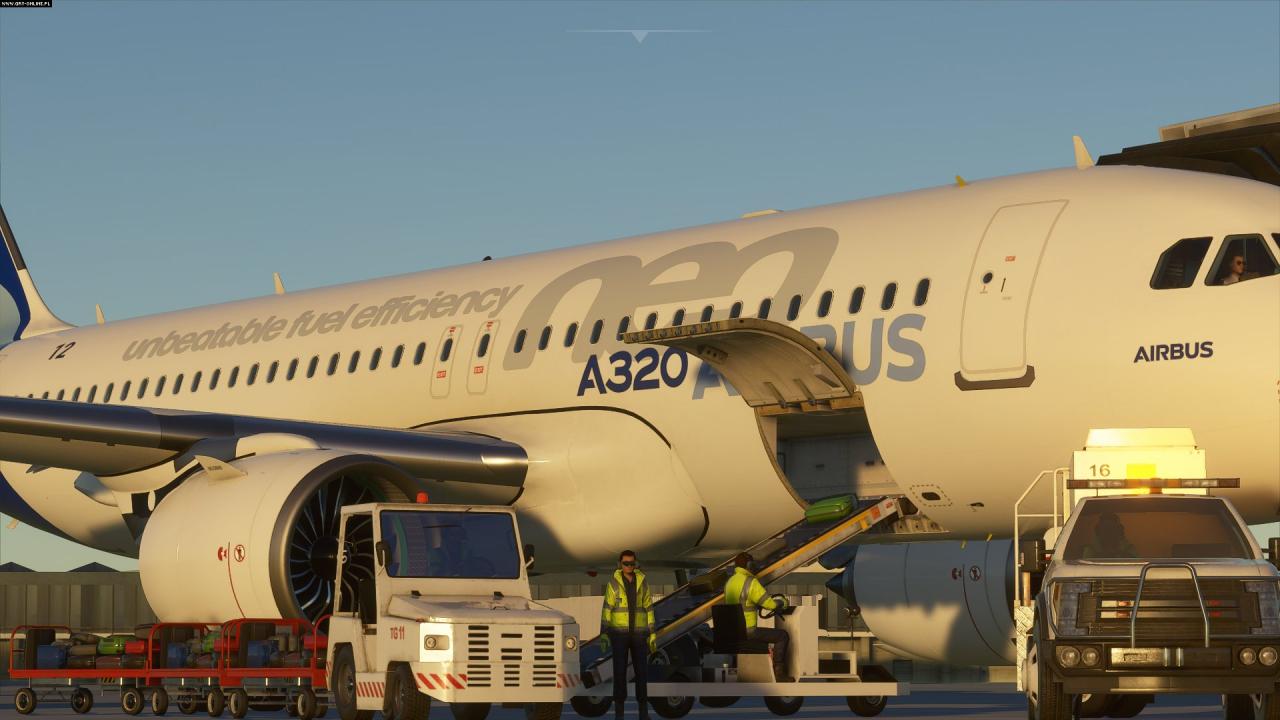
There are two main views in the game: from the cockpit, i.e. internal (from the first person), and external (from the third person).
To switch between them, just press the END button on your keyboard (located above the arrows) or the View button on the Xbox controller (also above the arrows, i.e. crossword).
Of course, you can rotate the camera in any of the above views – either by holding down the right mouse button and moving it, or by moving the controller’s right analog.
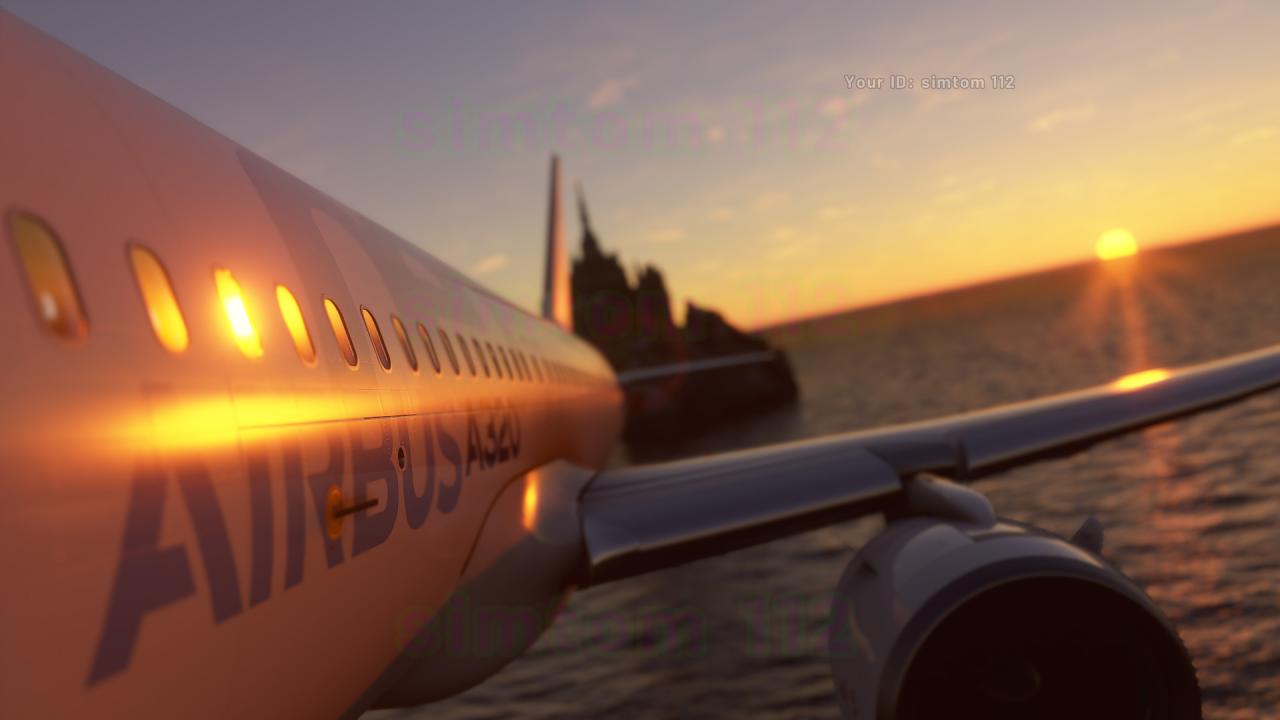
Autopilot
To do this, move the cursor up during the flight and select AI Control.
You will see a window with three options that you can turn on and off:
- Checklist support – SI (artificial intelligence) will automatically check the vehicle before starting
- Manage radio communication – SI will take care of communication with air traffic control
- Aircraft control – this option will interest most people. The SI will take control of the aircraft, leading it to its destination or, if this is not specified, safely in a straight line and at the right height.
- You can also quickly turn the autopilot on and off using the CTRL + ALT + X key combination.
Autopilot is great when you temporarily have problems with controlling the plane – when the third SI option is activated, it will take care of the vehicle and pilot it safely. After a while you can take over again
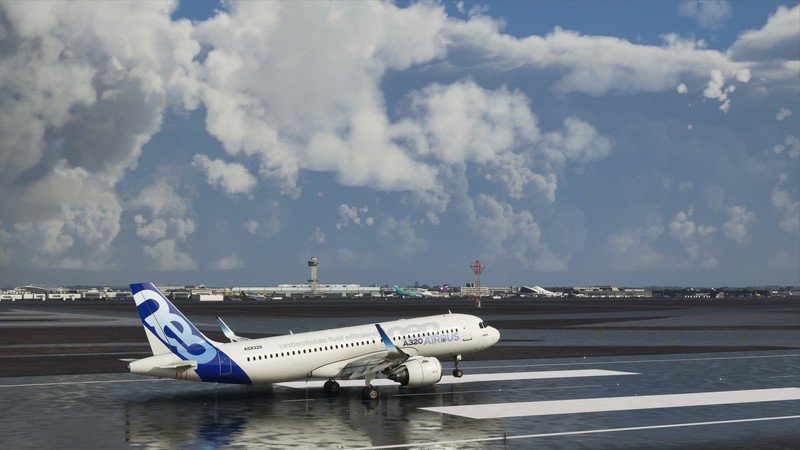
How to take off
Be careful at the very beginning: remember that you do not have to start your flight from the airport. You can start already in the air if you choose a specific place on the world map and then click “Arrival”.
To take off from the air, make sure that the lane is free by holding down X on the pad or rotating the camera.
If it is safe, release the brake by pressing Y + B on the pad.
If you already have the runway in front of you, you are ready to fly. Otherwise, you have to set yourself up properly.
Start the engine with the A button and increase the thrust to make the plane go. Position yourself on the centerline of the runway, turning with LT and RT. Brake now, holding the brake with the Y button. Also make sure that the flaps are ready to fly, i.e. their indicator is on top – you can control them with LB and RB.
To take off, open the throttle to the maximum, increasing the engine power by pressing A. Drive on the runway, keeping the course straight with LT and RT.
When you reach the speed of at least 55 knots, direct the volute slightly downward (left analog), picking up the beak gently. Keep the bow above the horizon for a safe ascent.
Once you are at the desired height, you can level the volcano and fly straight.
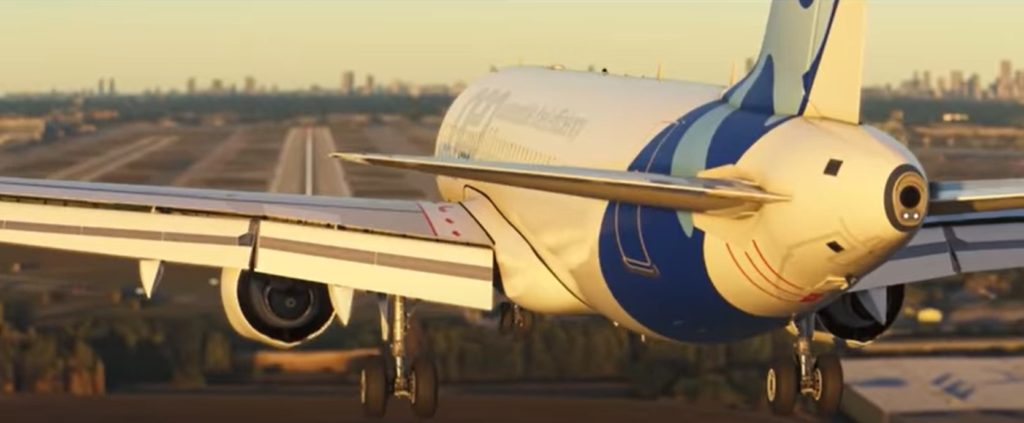
Weather and time
When you are on the world map, where you select your destination, you can change the time of flight with the slider – by default it is set to the real one.
To access additional details, click on the Flight Conditions tile.
In the Weather and Time section you have three choices: Live, Preset and Custom.
Before we move on to the description, let’s briefly explain how these options differ:
- Live – click on this option to make the game automatically adjust the time of day and conditions to the real ones
- Pre-settings – a great option for people who want to change the weather quickly, without interfering with detailed settings
- Custom – here you can access very detailed options, such as cloud height or wind direction
- The Live function does not require any additional explanation, but let’s look at the other two
Here you can set the time and quickly change the weather to the chosen type. On the right side you can change the date.
You also set the time and date here. At the top you will also find quick weather settings .
You can further customize your chosen weather type by using the numerous options below . Here you can set the type of precipitation and the wind.
Before you start to edit the weather, for safety reasons, enable the active pause.
Move the cursor to the top of the screen to show the tool menu. Click on Weather .
The window that opens is similar to the Custom function described above. So you can set the initial weather settings here, and then change the details with the other options.
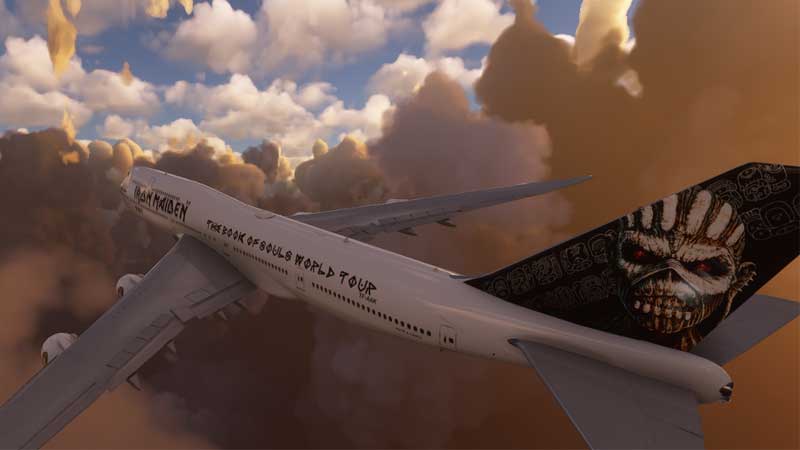
On the world map where you choose your destination, click the plane in the upper left part of the screen.
This will take you to the vehicle selection menu. Just click on the desired model and then click the button we called up this menu again to return to the map.
In the upper part of the window you will find several categories with which you will sort the available planes. Under particular models you will find detailed information, including cruising speed and maximum altitude. For beginners we recommend smaller machines, easier to master.
On the left side you will also find tabs to change colors, weight and balance, failure options and traffic control options.
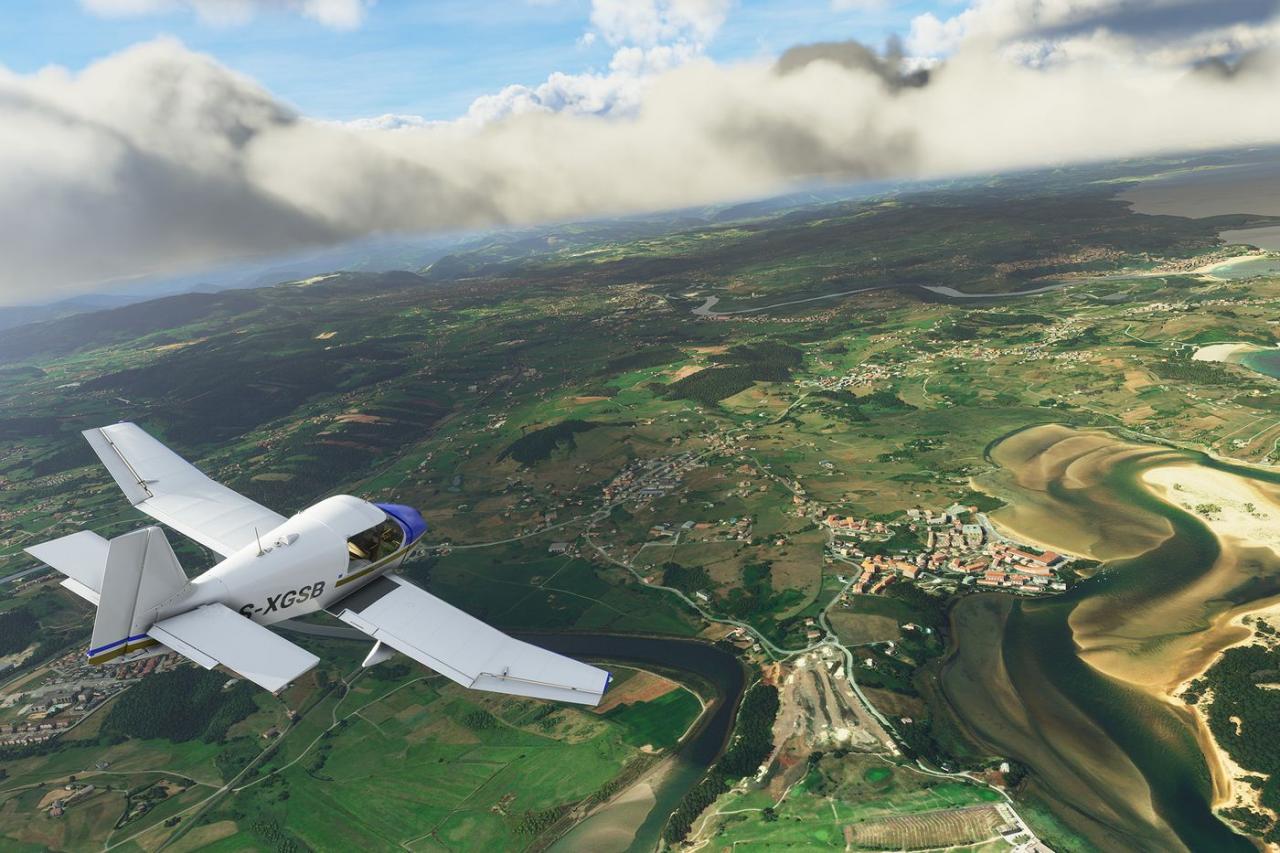
World map
Remember that you can freely rotate the map, but also zoom in with the mouse wheel. Zooming is very important because the icons of smaller and the smallest airports, beacons, positions and other objects will only start to appear up close.
- globus: obracaj ziemią i przybliżaj widok za pomocą myszy
- menu z wyborem samolotu
- wyszukiwarka lotnisk i obiektów zainteresowania (POI): wpisz pierwsze litery miasta, obiektu, lotniska, by uzyskać listę wyników
- wybór lotniska odlotu z listy
- wybór lotniska przylotu z listy
- konfiguracja warunków lotu
- filtry: bardzo ważne filtry ustawień mapy świata
Press “Open filters” at the bottom of the screen to open additional menu. Here you can choose which airports are to be shown on the map, as well as which objects related to navigation. It is worth to enable NAVAIDS and the FIX and RNAV position report, so you can easily configure the route of your flight.
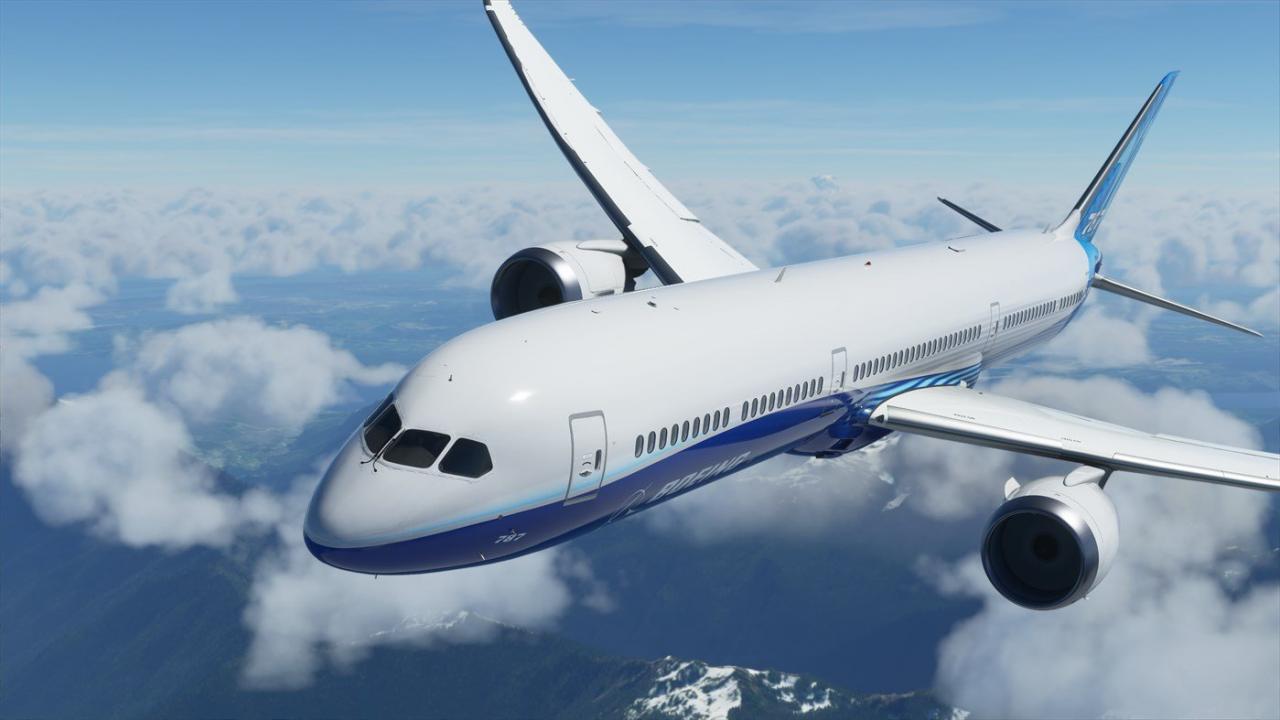
Airports and airports symbolize a round sight. The icon with an asterisk means that a given airport has been mapped out by the creators with a devotion to detail.
Find on the map any airport from which you want to start your flight, and then click on it. A list will appear. You can mark Set as Departure.
If you click on Zoom in details from the selection list above or with the mouse wheel you will zoom in on the world map, the airport will be almost as close as possible to the airport and you will be able to look at its layout.
The green circle symbolizes the position of your plane on the runway. This is the default setting and you can change it: just point the momentum from the other end of the runway with the mouse or point any parking space. You will find the same settings in the airport selection drop-down list.
- If you place the plane on the runway, you will start your flight just before takeoff, with the engine on and permission to take off.
- Remember that if you indicate a seat outside of the runway, you will have to make a checklist for starting the on-board systems and the engine, get permission from the tower to taxi to the runway and finally set up on the runway – so this is a procedure for more advanced players.
After selecting the airport of departure (or other place) you can zoom out of the map and check the range of your aircraft. The circle symbolizes how far, with average fuel consumption, you are able to reach without inland navigation.
When you set the two points on the map: departure and arrival, a list of flight plan selection will appear in the top left window.
VFR (Visual Flight Rules) is a flight that takes place under good weather and visibility conditions, based on external visual reference points.
IFR (Instrument Flight Rules) is a flight that takes place on the basis of and under the guidance of airborne instruments. Flight under these rules is strictly controlled by air traffic control and you have to follow the instructions (that is why it is worth to plan your flight accurately). IFR can take place in both good and bad conditions (bad weather conditions require switching to IFR).
On the list you will find the following options:
- [VFR] Directly – GPS. During the flight you are guided by GPS – you can turn on the line you will be moving on, but weather conditions – mainly visibility – must allow you to fly, navigate to the airport and land.
- [VFR] VOR to VOR. In this flight you will use ground-based beacons to determine your own position using on-board systems.
- [IFR] Airways at low altitude. You will be moving through air corridors designed for low altitude flights. Your flight will be controlled by a traffic controller. You will be able to ask him for help in navigation. You will read your position with the help of on-board instruments.
- [IFR] Low altitude airways. You will move through air corridors designed for flights at high altitude – which means mainly flights by large planes, e.g. passenger aircraft. Your flight will be controlled by a traffic controller. You will be able to ask him for help in navigation. You will read your position with the help of on-board instruments.
Flight Planning
When you choose the take-off point and the destination point, it is worthwhile for you to fully plan the route of the flight: both after take-off, at cruising altitude and, of course, when approaching the landing. For this purpose you will use radio beacons (remember to activate their visibility – as you will learn from the world map page).
Run the legend on the world map by clicking on the button or L shortcut at the bottom of the screen (see picture below). Legend window will open on the right. The beacons are defined by icons. Zoom in tightly on the world map near the planned departure / airport, until the dots begin to turn into icons.
You will find sample and most popular radio beacons: 2 – Fix, 3 – RNAV, 4 – VOR/DME VOR. Please note that there are beacons located near airports, even medium ones, so that you can make an appropriate approach to the landing (they are also used in ILS systems).
To add a beacon to your planned flight, simply select it and press add button. By pressing the same lantern a second time you can remove it from your planned route.
With the help of a beacon, you can also mark the places you want to reach, e.g. by visiting a given area of the globe.
Remember that you can also add any places from the map (click on an empty field and add a place), objects of interest, e.g. with an asterisk, and any other points from the map, e.g. other airports where you want to make an inland navigation.
After determining the points of departure and arrival, as well as the route with the help of beacons and other points, go to the Navigational Log: Here you can take a look at the planned flight – first of all, determine the altitude, but also see the individual stages of the flight and altitude.
Here you can specify the options for multiplayer play, you can specify whether the air traffic is to be downloaded live, or maybe guided by artificial intelligence or turned off.
Finally, you can also specify the weather conditions – live or choose a settings option and adjust the weather to your liking. Storm flight? No problem, just point the appropriate icon.

How to refuel a plane
To check the current fuel status on the flight, you can find the appropriate display on the cockpit or go to the external view (press End on the keyboard) and then you will find the third post from the left side of the screen (with the word Fuel).
By default, the fuel unit is gallons (GAL).
If you run out of fuel during the flight, you can use a simple way to “refuel”. Just select the Fuel icon from the top menu (hover the arrow on the top edge of the screen).
Then the data screen will appear. All you have to do is move the fuel slider to the right, and then the plane will automatically receive this amount of fuel. If you drag too much, then the weight of the plane may be too much and you will get a warning – so just move enough so that all indicators remain white and the weight is not exceeded.
You can also use the unlimited fuel option. To do so, in the Main Menu, select Options from the top of the screen and then the Support icon.
Now find the Aircraft Systems section and enable the unlimited fuel option. Now you can fly indefinitely every flight.
The most realistic is of course refueling after landing, on the apron, when you park the machine. To do this, you need to call up the ATC communication screen (press the Scroll Lock button on your keyboard or select ATC from the top menu when you move your mouse to the edge of the screen).
From the available options to contact the tower, select the ground crew and ask for a fuel tanker, and then wait for the tanker to arrive. When you get there, you will see a familiar fuel screen where you can indicate how much fuel you want to take.

Related Posts:
- Microsoft Flight Simulator: 100% Achievement Guide
- Microsoft Flight Simulator: How to Restore AI traffic Lights after SU5 (Steam Version)

